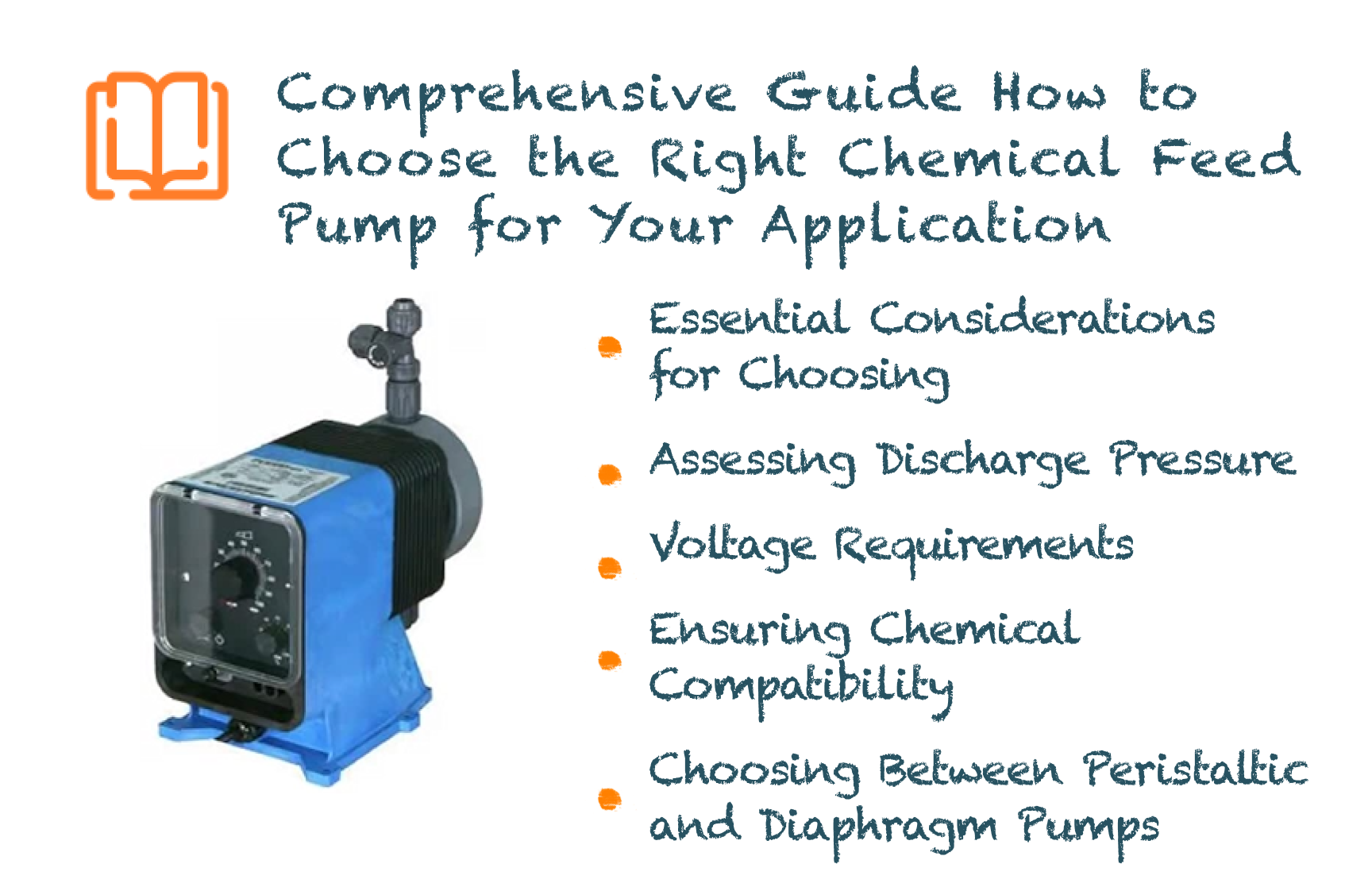Essential Considerations for Choosing a Chemical Feed Pump
Selecting the right chemical feed pump for your application is crucial for ensuring efficient and reliable chemical dosing. Here, we provide a detailed guide to help you make an informed decision based on key factors such as output requirements, discharge pressure, voltage, chemical compatibility, and pump type.
Determining Output Requirements
The first step in choosing a chemical feed pump is to determine the output requirements. This involves calculating the number of gallons of chemical that need to be pumped per day while the pump is running. Remember, the pump will likely not run continuously, so precise measurement is essential.
- Avoid Oversizing: Metering pumps should never be oversized. The exact flow rate required for the application must be determined accurately.
- Flow Rate Sizing: The pump should be sized so that the maximum expected flow rate is 85% to 90% of the pump’s capacity. This allows room for additional capacity if needed. The minimum capacity should never be less than 10% of the pump capacity to maintain accuracy.
Assessing Discharge Pressure
Next, consider the discharge pressure. This is the maximum pressure in the line at the point where the injection valve is installed. For instance, in many water treatment plants, chlorine is injected into a line just before the treated water enters the storage reservoir. The pressure in this line is typically quite low, but it varies depending on the specific application.
Voltage Requirements
Determine the voltage required for your pump. Common options include:
- 120VAC: This is the most common voltage for chemical feed pumps.
- 220VAC: Available on special order for specific applications.
Ensuring Chemical Compatibility
The pump components must be compatible with both the chemical being pumped and any cleaning solutions used. For example, a pump used for sodium hypochlorite must have components that are compatible with both sodium hypochlorite and cleaning agents like vinegar or CLR. Consult a chemical compatibility chart to make this determination.
Choosing Between Peristaltic and Diaphragm Pumps
Your choice between a peristaltic pump and a diaphragm pump will depend on various factors. Here’s a comparison to help you decide:
Peristaltic Pumps
Operation:
- Uses a flexible tube inside a circular pump casing with rollers that compress the tube to move the chemical.
- Effective for pumping gas-forming fluids as the gas is pushed through the tube.
- Simple, self-priming, and can handle more viscous chemicals since there are no check valves to clog.
- Operates better against higher back-pressure.
- Easy and Inexpensive Tube Replacement: The tube is easy and inexpensive to replace, making maintenance straightforward.
Drawbacks:
- The repeated squeezing weakens the hose over time, diminishing pump capacity and increasing energy use.
- The hose may rupture after extended use, and these pumps have a specific maximum runtime that should not be exceeded.
Diaphragm Pumps
Operation:
- Uses a reciprocating rubber or plastic diaphragm and check valves to draw and force chemical through the pump.
- More complicated but cheaper to operate long-term, more efficient, and less likely to leak with proper maintenance.
Drawbacks:
- Check valves can become clogged if not properly maintained.
- The pumping cycle can cause gas buildup in the pump head when used with certain chemicals, leading to vapor lock or loss of prime. This issue can be alleviated with a degassing head option.
Our Offerings
We offer a range of pumps to meet your needs:
- Pulsafeeder Diaphragm Pumps: Efficient and reliable with proper maintenance.
- Chem-Tech Peristaltic Pumps: Simple to use and ideal for gas-forming fluids.
Confidently Choose a Pump That's Right for You
Choosing the right chemical feed pump involves careful consideration of various factors including output requirements, discharge pressure, voltage, chemical compatibility, and the type of pump. By understanding these elements and evaluating the specific needs of your application, you can select a pump that ensures optimal performance and longevity.
For more information or to explore our range of chemical feed pumps, contact us today.
